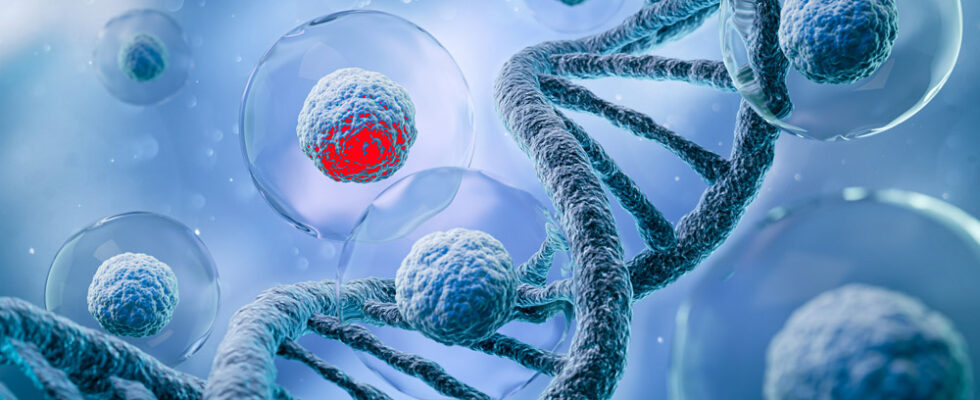Amazing discovery: The genetic material in all cells in our body should actually be the same. But that is not the case, as a study using human bone marrow cells as an example has now revealed. According to the study, even in healthy people, one in 43 of these cells is genetically massively altered – chromosome pieces are swapped, inserted the wrong way round or have been copied multiple times. As a result, the genetic differences within our body can be even greater than in other people, as the researchers report in “Nature Genetics”.
Each of us has a unique DNA blueprint that is contained in every single cell in our body. It is generally assumed that gene activity and regulatory deposits on the genetic material vary depending on the organ and tissue, but the basic DNA code is identical in all cells of an individual. Mutations can occur over the course of a person’s life due to DNA damage or copying errors during cell division. However, the assumption is that the genome in every cell should be largely the same, especially in younger, healthy people.
DNA from blood stem cells in comparison test
But the conventional wisdom is apparently wrong, as Karen Grimes from the European Molecular Biology Laboratory (EMBL) in Heidelberg and her colleagues have now discovered. For their study, they examined blood stem cells from the bone marrow of 19 people of different sexes and ages – from newborns to 92-year-olds. They subjected several cells from each individual to single-cell sequencing. This so-called Strand-Seq method shows the base sequence of each DNA strand in each individual cell.
The analyses revealed something surprising: The blood stem cells of 84 percent of the participants showed some significant deviations from the uniform DNA code. These included missing pieces of chromosomes, but also additional copies or reversals of certain DNA sections. Unlike gene mutations, which often only affect individual DNA bases, these chromosome mutations change entire sections of the genome at once.
“We discovered such newly formed mosaic structural variants in one of 43 cells of an individual – regardless of age,” the researchers report.
Textbook opinion refuted
This means that even at a young age, our individual cells are apparently more genetically different than previously thought. “It is simply astonishing how great the previously undiscovered heterogeneity in our genomes is,” says co-author Ashley Sanders from the Max Delbrück Center for Molecular Medicine. “We are now realizing that not every cell in our body has exactly the same DNA – contrary to what the textbooks say,”
These DNA changes are not found in cancerous tumors or other pathologically altered cells, but in completely healthy people. “The study underlines that we are all mosaics,” says senior author Jan Korbel from EMBL. “Even supposedly normal cells carry all kinds of gene mutations. Ultimately, this means that there are more genetic differences between individual cells in our bodies than between us humans.”
The differences grow with age
The analyses also showed that these genetic differences between cells increase with age. On average, 36 percent of the blood stem cells in those over 60 showed such subclonal structural variants of the chromosomes. “What this means for the definition of ‘normal’ human aging and how this can affect the types of diseases we suffer from are extremely important questions for the field of research,” says Korbel.
However, it is still unclear whether this increase in subclones occurs because the control mechanisms fail in old age – and is therefore a mere symptom of aging. Or whether these genetic changes are perhaps even a driving force behind many of the signs of aging. “Our future single-cell studies should give us clearer insights into how these mutations, which have so far gone unnoticed, affect our health and possibly contribute to how we age,” says Korbel. (Nature Genetics, 2024; doi: 10.1038/s41588-024-01754-2)
Source: Max Delbrück Center for Molecular Medicine in the Helmholtz Association
29 May 2024 – Nadja Podbregar

